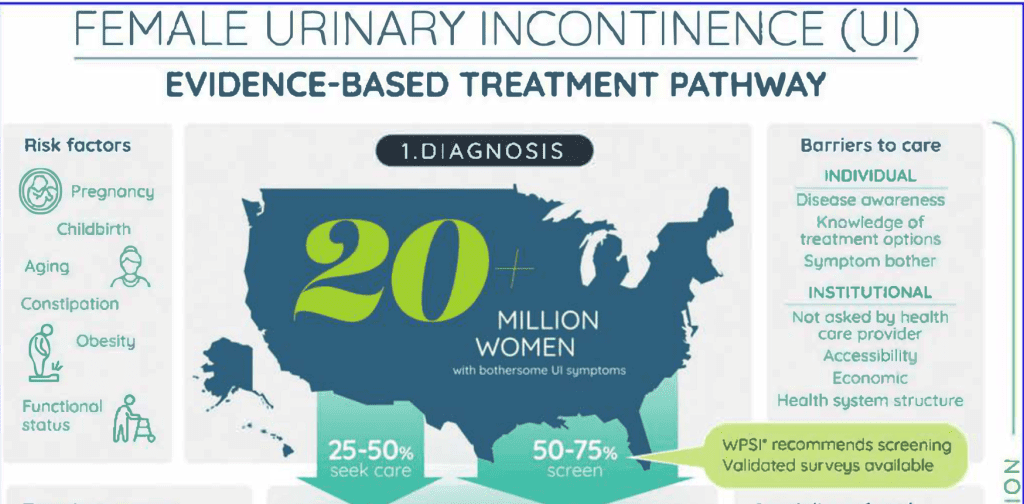Of the 25 million adults Americans suffering with some form of urinary incontinence (UI), 75% to 80% are women. In fact, UI affects twice as many women as men and half of all women will experience issues with it in their lifetime. And while it is often considered an older woman’s issue, nearly 17% of woman between the ages of 18 and 40 experience UI, too. These estimates are projected to rise, due in large part to the size of the aging demographic and the national obesity epidemic, both of which are associated with increased UI risk.
Yet while sales of adult diapers now outpace those of baby diapers, some patients may be reluctant to broach the topic with you. Minassian et al found that as few as 25% of women with UI in the U.S. seek care for their condition. Why and what might help open the discussion?
‘No really, it’s nothing’
Many patients don’t raise the topic with you because they believe UI is an inevitable aspect of aging for which healthcare holds no solution. Others may see it as primarily a nuisance rather than a health problem when, in fact, urinary incontinence has been linked with depression, anxiety, decreased activity, and social withdrawal. Physical consequences include pressure sores, sleep disturbances and decreased sleep quality, urinary tract infections, and falls and fractures, the leading cause of death in people over 65 (Batmania et al, 2021).
A further contributing factor to patient’s reluctance to discuss their UI issues is that it can occur during sexual activity (coital incontinence) potentially contributing to sexual dysfunction and thus a further negative impact on patients’ quality of life.
‘My boss may notice’
Working women with UI face the added challenge of having to navigate around their condition. The inability to readily schedule bathroom breaks, the complex logistics and necessities of business travel, and concerns about odor or fear of experiencing accidents in front of co-workers can all contribute to the anxiety and burden of disease these patients bear.
In recognition of the numbers of women with UI who do not seek or receive care, a 2018 systematic review explored the utility of proactive UI screening for women, and a subsequent Women’s Preventive Services Initiative recommendation was issued, endorsing annual screening for UI for women aged 18 and over, using validated survey tools.
Download this urinary incontinence tool
In 2021, McKinney et al developed an infographic to support education and to promote screening, evaluation, and treatment for female UI. By integrating current evidence and synthesizing UI screening and treatment recommendations, this infographic was developed with the dual objectives of improving patient and provider knowledge of this health condition and facilitating shared decision-making about treatment options, in line with professional guidelines.
incontinence graphicFirst ever, guideline-derived tool for UI
The comprehensive set of sources the authors tapped for the infographic’s development included published society guidelines, position statements, and associated references from the American College of Obstetrics and Gynecology, the Women’s Preventive Services Initiative, American Academy of Family Physicians, American College of Physicians, the Society of Urodynamics and Female Urology, the American Urological Association, and the American Urogynecologic Society, supplemented by a PubMed search for related literature.
Be sure to download this first-ever visual representation of this guidance in the form of a two-page infographic which the authors hope “may be useful for HCPs who want to engage in shared decision-making with their female patients…Readers are encouraged to print and share the infographic as a useful tool in patient education and clinical practice.”
The contents of this feature are not provided or reviewed by NPWH.

